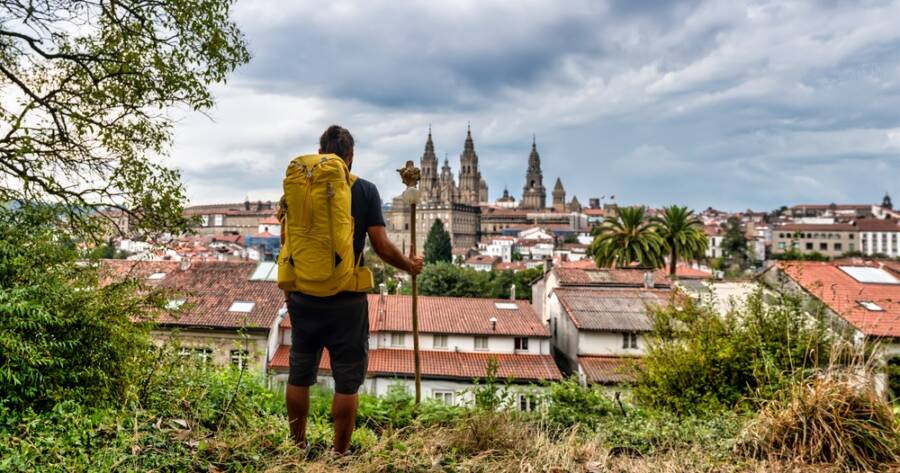Each year, thousands of people lace up their boots and set off along the Camino de Santiago, the historic pilgrimage route that stretches across Spain and into other parts of Europe. While the journey has religious roots, today’s walkers are just as likely to be seeking clarity, calm, or connection as they are spiritual redemption. For many across the EU, the Camino has become a personal pilgrimage for the mind — a path to rediscover purpose in a noisy, fast-moving world.
A Journey Through History and Landscape
The Camino de Santiago, also known as the Way of St. James, dates back to the 9th century and ends at the cathedral in Santiago de Compostela, where the remains of the apostle Saint James are said to be buried. There are multiple routes, including the popular Camino Francés, the coastal Camino del Norte, and quieter paths like the Camino Primitivo.
Regardless of the route chosen, the Camino passes through a variety of landscapes — from the rolling hills of Galicia to sunlit vineyards, mountain passes, and ancient towns. The terrain is beautiful and often challenging, but its real power lies in its rhythm. Day after day of walking creates a meditative state that helps clear the mind and settle anxious thoughts.
Unlike fast-paced holidays, the Camino invites slowness. There’s time to reflect, to notice small details, and to reconnect with your surroundings — all of which can have a calming effect on the nervous system and promote mental clarity.
Walking With Intention
For many, walking the Camino isn’t just a physical challenge; it’s a decision to step away from daily distractions and focus inward. Some walkers come with a specific intention — recovering from burnout, navigating a life change, grieving a loss, or seeking inspiration. Others begin with no clear goal, simply drawn by the idea of open time and purposeful movement.
What unites them is a desire to disconnect to reconnect. Without screens, meetings, or constant updates, pilgrims find space to think deeply and listen to their own thoughts. Walking all day without distraction often brings buried ideas or emotions to the surface — not always easy, but often healing.
Sharing the path with others adds to the experience. Conversations happen naturally on the trail or over evening meals. Stories are exchanged, but silence is equally respected. It’s this gentle mix of solitude and solidarity that gives the Camino its unique emotional texture.
Simplicity as a Mental Reset
Life on the Camino is simple. You carry what you need, sleep in basic accommodations, and eat what’s available in small towns along the way. This simplicity is part of the Camino’s charm — and its power.
Stripped of everyday decisions and digital overload, your mind begins to slow. What once felt urgent fades into the background. Many walkers report improved sleep, lower stress levels, and a renewed sense of appreciation for life’s small pleasures: a kind gesture, a warm meal, a sunrise.
This return to essentials can serve as a reset for people caught in the busyness of modern life. By the time they reach Santiago — or even halfway there — many walkers feel more grounded, more focused, and more at peace with themselves.
A Path With European Roots and Universal Appeal
Though most pilgrims walk through Spain, the Camino de Santiago is part of a wider European heritage. Paths leading to Santiago exist in France, Portugal, Germany, and beyond. Many walkers begin their journey in their home country, sometimes weeks before they reach Spain.
This cross-border nature reflects the Camino’s deeper message: that connection, reflection, and transformation are not tied to one culture or belief system. The pilgrimage welcomes people of all ages and backgrounds. Whether you’re a retiree, a university student, or a professional on sabbatical, the trail has something to offer.
Today, the Camino also aligns with the EU’s broader push for sustainable travel, mental health awareness, and cultural preservation. As people search for more meaningful ways to take time off, the Camino stands out as a journey that nourishes both body and mind.
A Walk Toward What Matters
The Camino de Santiago is more than just a walk — it’s an opportunity to pause, to reflect, and to move forward with intention. For those feeling overwhelmed, disconnected, or uncertain, the trail offers a gentle but profound way to reconnect with purpose.
Whether your steps are guided by faith, curiosity, or a simple need for space, the Camino welcomes you. In every quiet stretch of forest or sunlit village square, there’s a chance to find clarity, restore your spirit, and return home with more than just memories — but with a renewed sense of direction.

